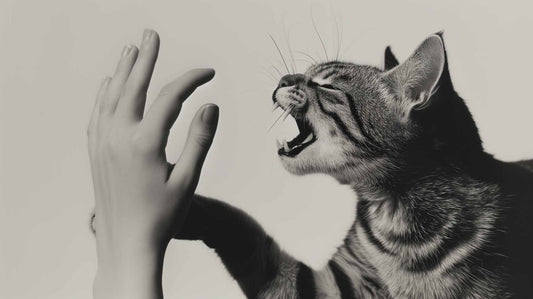
What is a Dog Heat Cycle and How Do You Handle It
Marie DuchessAs a responsible dog owner, it is essential to understand the reproductive cycle of your female dog. The dog heat cycle, also known as estrus, is a natural process that occurs in unspayed female dogs. This blog post will provide you with a comprehensive guide on what the dog heat cycle is and how to handle it.
What is the Dog Heat Cycle?
The dog heat cycle refers to the period when a female dog is fertile and can potentially mate and reproduce. It is a recurring event that typically happens every six to twelve months, depending on the breed and individual dog. The cycle consists of four stages: proestrus, estrus, diestrus, and anestrus.
How Long Does the Dog Heat Cycle Last?
The duration of the dog heat cycle can vary, but on average, it lasts for about three weeks. The proestrus stage, which is the initial phase, lasts for approximately 9 to 10 days. This is followed by the estrus stage, which is the period when the female is receptive to mating and can last anywhere from 5 to 13 days. The diestrus stage, where the female is no longer receptive to mating, lasts for around 60 to 90 days. Finally, the anestrus stage is a period of sexual inactivity that can last for several months.
Signs of the Dog Heat Cycle
During the dog heat cycle, you may notice various physical and behavioral changes in your female dog. Some common signs include:
- Swollen vulva
- Bloody discharge
- Increased urination
- Changes in behavior, such as restlessness or aggression
- Attracting male dogs
How to Handle the Dog Heat Cycle
Handling the dog heat cycle requires careful management and consideration. Here are some tips to help you navigate this period:
1. Keep your dog indoors
During the estrus stage, it is crucial to keep your female dog indoors or in a securely fenced area to prevent unwanted mating. Male dogs can detect a female in heat from a distance and may try to reach her.
2. Use protective measures
If you have a male dog in the household or live in an area with roaming dogs, consider using protective measures such as dog diapers or keeping your female dog in a separate room to avoid accidental mating.
3. Consult with your veterinarian
Your veterinarian can provide valuable guidance on managing the dog heat cycle. They may recommend spaying your dog to prevent future heat cycles or suggest alternative methods of contraception.
4. Monitor your dog's behavior and health
Keep a close eye on your dog during the heat cycle. If you notice any unusual symptoms or signs of distress, consult your veterinarian immediately. It is essential to prioritize your dog's well-being throughout this process.
5. Consider long-term solutions
If you do not intend to breed your dog, spaying is a recommended option. Spaying not only prevents unwanted pregnancies but also reduces the risk of certain health issues, such as uterine infections and mammary tumors.
Remember, understanding and managing the dog heat cycle is an essential part of responsible pet ownership. By being informed and proactive, you can ensure the well-being and happiness of your furry friend.













